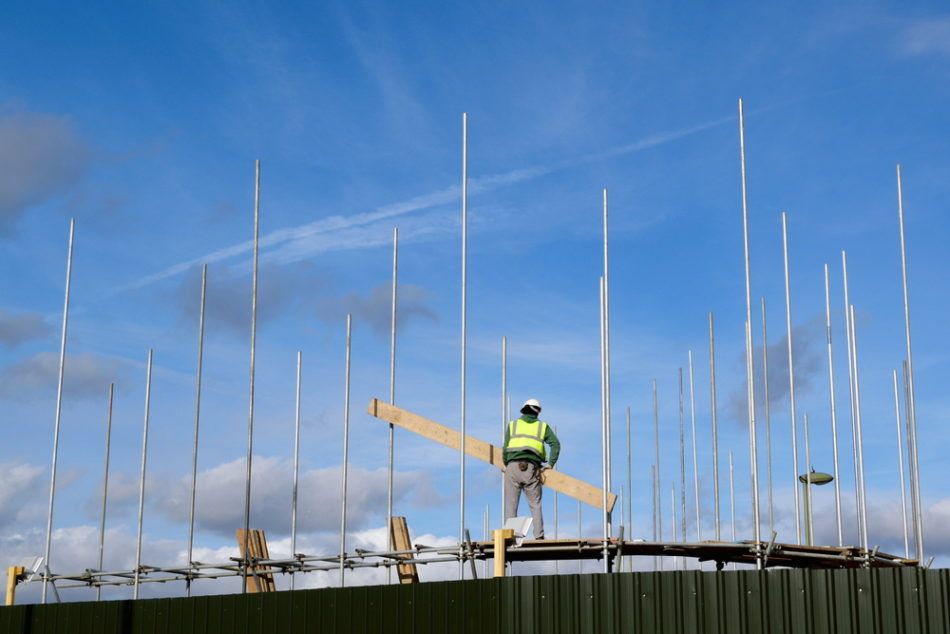The Top 4 Risks That Lone Workers Face (And How to Manage Them)
These are the four most common risks that lone workers face. What can employers do to mitigate the dangers? The Bureau of Labor Statistics recorded...
Professionals in a wide variety of fields often find themselves alone in hazardous work conditions. Are you doing all that you can to keep your lone workers safe?
What do laboratory science, HVAC maintenance, longshoring, and door-to-door sales have in common? They are all lines of work that require employees to be on their own for long periods of time in potentially dangerous settings. Lone workers are not limited to these industries, either; security guards, drivers, repairmen, and employees in a variety of other fields also frequently find themselves alone and at risk.
More so than workers who do hazardous jobs side-by-side with colleagues, lone workers are at a particularly high risk of severe injury or death simply because no one else is around to help them in the event of an accident. That’s why safeguards beyond those found in the typical workplace must be instituted to protect them. While the start-up costs of new safety measures may seem difficult to justify, it’s actually far more expensive not to have them in place.
According to one study, a majority of employers — six out of every ten — are sued by one of their workers at some point. While workers’ compensation laws are designed to protect employers from workplace injury lawsuits, they are often an inadequate safeguard against litigation. Any evidence of negligence in providing a safe working environment increases the risk of becoming embroiled in a lawsuit, and when it comes to lone workers, negligence doesn’t have to rise to the level of faulty equipment or substandard working conditions — failure to provide these workers with a means of summoning emergency help puts an employer at fault, too.
But even if an injured employee chooses not to sue, their accident is sure to attract the attention of the Occupational Health and Safety Administration (OSHA). This will likely result in an OSHA audit…and it may not end there — once OSHA comes knocking, any other areas of a business that need improvements will also be open to scrutiny. This could mean spending thousands in additional repairs and security measures.
These direct costs are not the only consequence of failing to implement solutions for lone worker protection. Most businesses spend a significant portion of their annual budget issuing advertisements, marketing collateral, press releases, public service announcements, and other informative messaging to maintain a positive relationship with the public. If news gets out that your company failed to adequately protect an employee, all of that hard work could quickly be undone.
Such a PR nightmare would not only hurt your relationship with future customers, but also with potential new hires. Nobody wants to work for a business that doesn’t make their wellbeing a priority — and that includes your current employees. If you fail to give an injured worker the care they deserve, employee morale — and your ability to retain top talent — will plummet.
It’s estimated that worker injuries cost the American economy about $250 billion a year, including expenses for increased workers’ compensation rates, medical bills, lost wages, and the costs of conducting incident investigations and hiring replacements workers. In addition to staving off these material costs, lone worker solutions and safety systems provide immaterial benefits like making your workers feel safe and easing your conscience.
Considering all of these potential costs, if a lone worker safety system prevents a single accident, it will have already paid for itself. Of course, most employers implement lone worker safeguards not because doing so is cheaper than paying for an accident, but because it’s the right thing to do. Supervisors care about the people they employ, and they want to keep them safe on the job.
Here are some steps you can take to protect a lone worker who falls ill, gets attacked, or otherwise becomes incapacitated on the job:
To learn more about how the TTI Guardian can keep your lone workers safe, request a quote today

These are the four most common risks that lone workers face. What can employers do to mitigate the dangers? The Bureau of Labor Statistics recorded...

Lone workers are at a greater risk than those who are continually around others. These workers can become ill, injured, or worse, and might be...

While it’s true that there is no law that prevents an employee from working alone, it’s always important to understand as much about this type of...